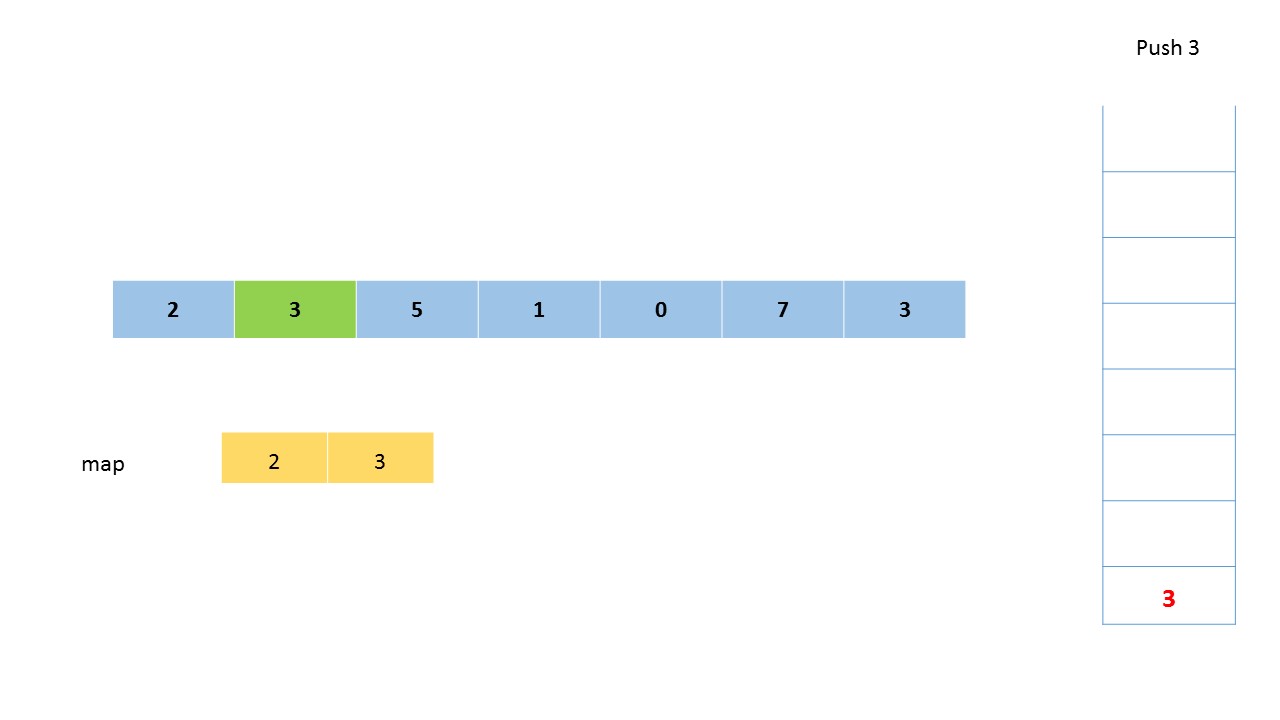本文最后更新于:2022年4月9日 中午
给定两个 没有重复元素 的数组 nums1 和 nums2 ,其中nums1 是 nums2 的子集。找到 nums1 中每个元素在 nums2 中的下一个比其大的值。
nums1 中数字 x 的下一个更大元素是指 x 在 nums2 中对应位置的右边的第一个比 x 大的元素。如果不存在,对应位置输出 -1 。
示例 1:
输入: nums1 = [4 ,1 ,2 ], nums2 = [1 ,3 ,4 ,2 ].-1 ,3 ,-1 ]num1 中的数字4 ,你无法在第二个数组中找到下一个更大的数字,因此输出 -1 。num1 中的数字1 ,第二个数组中数字1 右边的下一个较大数字是 3 。num1 中的数字2 ,第二个数组中没有下一个更大的数字,因此输出 -1 。
示例 2:
输入: nums1 = [2 ,4 ], nums2 = [1 ,2 ,3 ,4 ].3 ,-1 ]num1 中的数字 2 ,第二个数组中的下一个较大数字是 3 。num1 中的数字 4 ,第二个数组中没有下一个更大的数字,因此输出 -1 。
提示:
nums1和nums2中所有元素是唯一的。nums1和nums2 的数组大小都不超过1000。
Solution
参考:《算法小抄》3.7、**@AuroraRocks** 、@LeetCode官方
此题可以暴力求解,求出 num1 中每个数在 num2 中的位置,再从该位置往后找大于这个数的元素。时间复杂度 O(n^2^)
class Solution :def nextGreaterElement (self, nums1: List[int ], nums2: List[int ] ) -> List[int]:if not nums1: return 1 for _ in range (len (nums1))]for i in range (len (nums1)-1 , -1 , -1 ):1 ]while s and nums1[i]>=s[-1 ]:1 ] if s else -1 return ans
单调栈
可以忽略数组 nums1,先对将 nums2 中的每一个元素,求出其下一个更大的元素。随后对于将这些答案放入哈希映射(HashMap)中,再遍历数组 nums1,并直接找出答案。
1 2 3 4 5 6 7 8 9 10 11 12 13 14 15 16 17 18 19 20 21 22 class Solution {public :vector <int > nextGreaterElement (vector <int >& nums1, vector <int >& nums2) stack <int > stack ;unordered_map <int , int > umap;for (int i = nums2.size() - 1 ; i >= 0 ; --i) {while (!stack .empty() && nums2[i] >= stack .top()) stack .pop();if (stack .empty()) {-1 ;else {stack .top();stack .push(nums2[i]);vector <int > res;for (int num : nums1) {return res;
